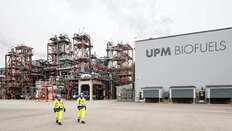- The biorefinery aims for an annual capacity of 500,000 tonnes of renewable fuels.
- The basic engineering phase will last a minimum of 12 months.
- The study will review Kotka, Finland and Rotterdam, Netherlands as potential locations.
- The technology concept includes the use of green hydrogen.

Project Overview
UPM is advancing its biofuels growth plans by initiating the basic engineering phase for a next-generation biorefinery. This facility is projected to have an annual capacity of 500,000 tonnes of high-quality renewable fuels, including sustainable jet fuel. The products aim to significantly reduce the carbon footprint in road transport and aviation, and replace fossil raw materials with renewable alternatives in chemicals and bioplastics.
Feedstock and Sustainability
The planned biorefinery will utilize UPM’s solid wood biomass-based residues and side streams, along with sustainable liquid waste and residue raw materials. This approach leverages UPM’s extensive experience in biomass sourcing, particularly in Finland and Central Europe, due to its large-scale operations in the pulp, paper, timber, and plywood sectors. The project also includes the development and testing of innovative carbon farming concepts.
Engineering and Location Study
UPM will conduct a detailed commercial and basic engineering study to define the business case, select the most innovative technology option, and estimate the investment required. The technology concept incorporates the use of green hydrogen in the production process. The study will evaluate the operating environment in two primary locations: Kotka, Finland, and Rotterdam, the Netherlands.
Timeline and Next Steps
The basic engineering phase is expected to last a minimum of 12 months. If the preparations are successful, UPM will proceed with its standard procedure of analyzing and preparing an investment decision. The UPM Lappeenranta Biorefinery, with an annual capacity of 130,000 tonnes, serves as a successful precedent for this new venture.

